Campanula, also known as Bellflower, is a genus of bell shaped flowers with many different species. Reminiscent of the cottage garden, these plants look wonderful mixed in with similar cottage style plants. Learn how to grow Campanula, and bring one of these sweet flowering plants into your garden.
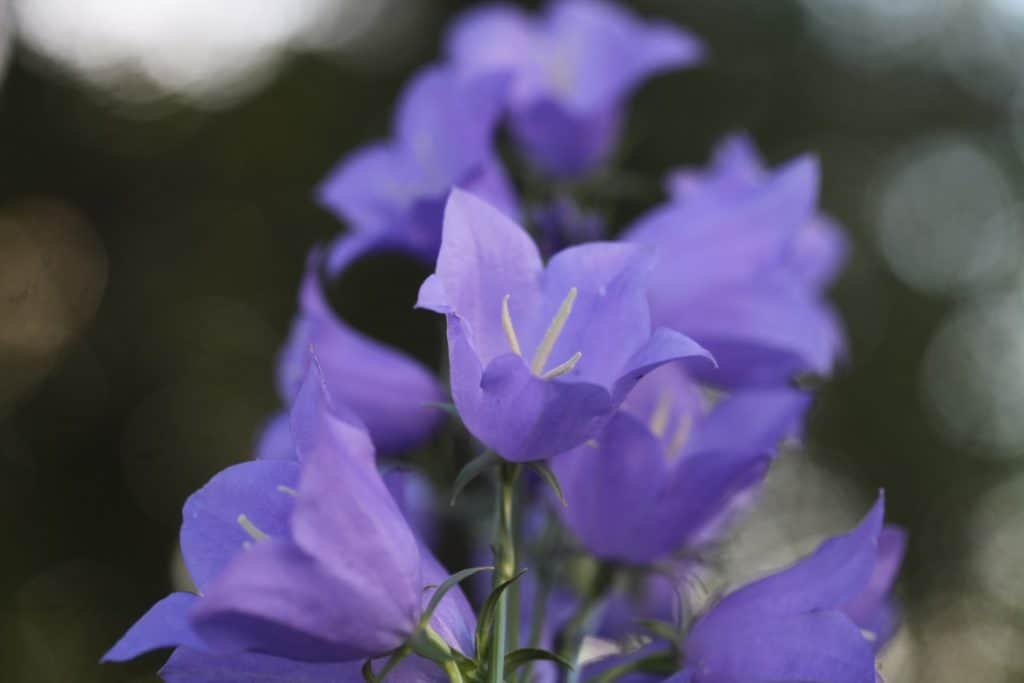
Our campanula grew all on it's own.
I believe that our Campanula is Campanula rotundifolia, with glistening open blooms.
Possibly escaped from someone else's garden, or brought in by the birds, either way it was a welcome sight in the garden.
I love the bell shaped flowers and the muted purple colour of the blooms. Ours was a light purple colour, although they can also be different shades of purple or white flowers.
They are even sometimes pink.
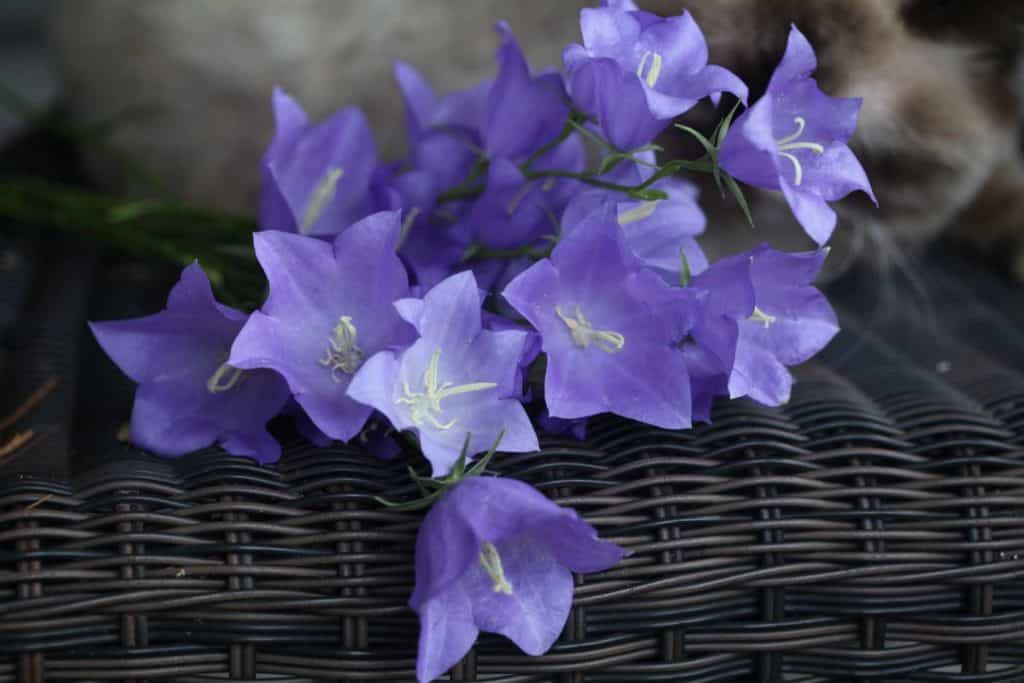
What Is Campanula?
Campanula is a genus of bell shaped flowering plants in the family Campanulaceae. These plants are distributed across the Northern Hemisphere.
Within this genus there are over 500 species and subspecies, which are also identified by the scientific or botanical name Campanula.
The common name for these plants is Bellflower, which comes from the latin word Campanula, meaning "little bell"in latin.
Other common names include harebell and bluebell, and more, depending on the species.
Campanulas or Bellflowers have many different plant types, including annual, biennial and perennial plants.
They range in size from small 4 inch ground covers to tall 6 foot high woodland species.
The shorter ground covers are perfect for rock gardens or to grow along the edges of borders. The taller plants look great when mixed with other cottage garden plantings like foxgloves and hostas.
The green leaves of the plant can be serrated and vary in size, with larger leaves towards the bottom of the plant.
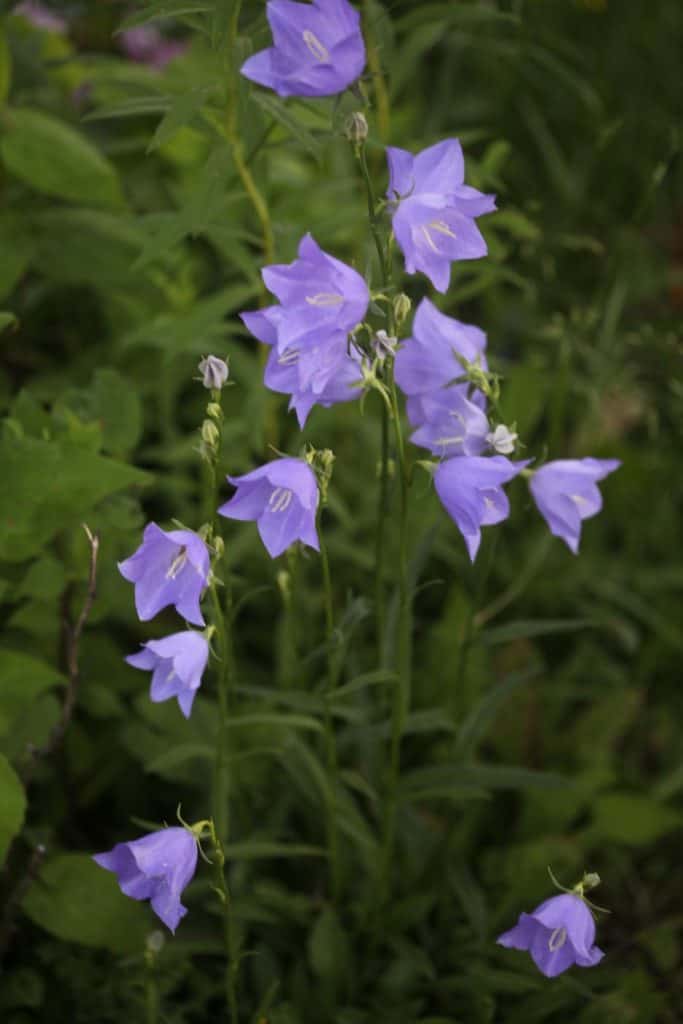
Campanula Flowers
The flowers of campanula are bell or star shaped. There can be subtle differences in the flower shape between the different species, although they are very similar.
Each individual flower is made up of a five lobed corolla, giving the appearance of a star.
The flower colour ranges from different shades of purple and pale blue, to whites and shades of pinks as well.
These cup shaped flowers attract many different types of pollinators, including bees, butterflies, and even hummingbirds.
The plants generally form a mounding pattern. Then as they begin to bloom they will produce stems which grow up from the mounding plant.
The stems can grow quite tall on some of the taller species, with long stems and nodding bell shaped blooms. The stems are much shorter on the ground cover types.
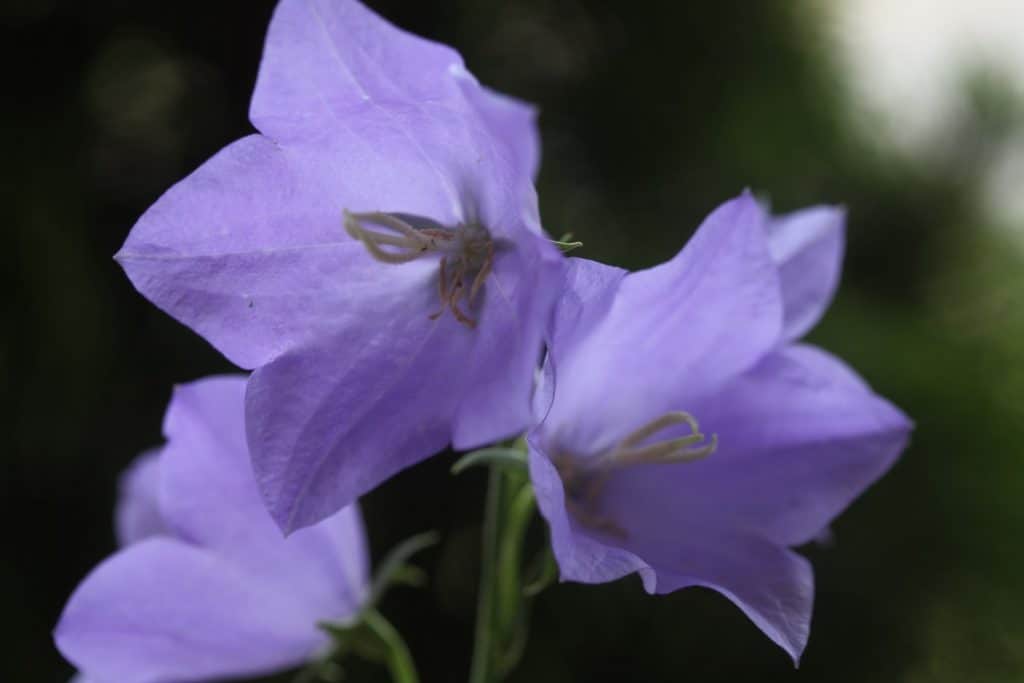
Is Campanula An Annual Or A Perennial?
Depending on the species, Campanula can be annual, biennial, or perennial.
Campanula medium, also known as Canterbury Bells, is a biennial with produces round and large bell shaped flowers in their second year of growth. These flowers are amazing cut flowers.
Campanula rotundifolia, also known as harebell, is a herbaceous perennial that looks great in the perennial border. I believe that this is the species that showed up in our garden.
Campanula latifolia is another herbaceous perennial grown as an ornamental plant.
Campanula can be a hardy flowering plant growing well in temperate climates.
The herbaceous perennial plants can survive the winters, even in very cold climates. The plants will die back in the late fall and winter, and the new growth reemerges again the following spring.
Does Campanula Come Back Every Year?
The perennial plants can grow back again every year, producing a mounding growth habit, and bell shaped purple flowers (as well as pink or white ) which are perfect for the cottage garden.
As herbaceous perennials, they can be lifted, divided and transplanted. This allows you to increase the number of plants and spread them throughout the garden.
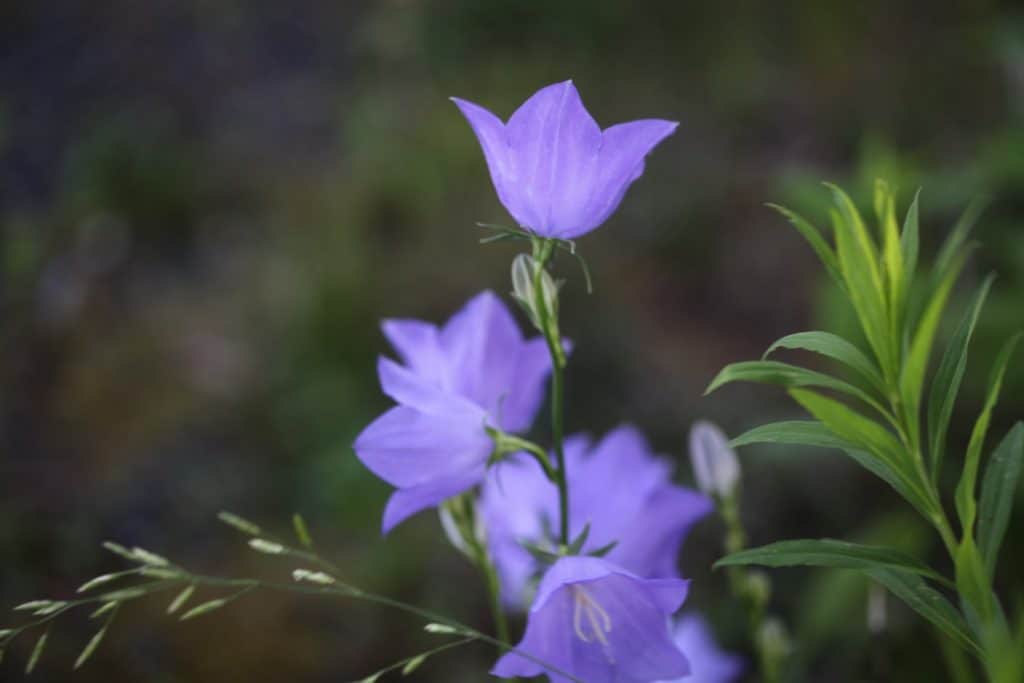
Is Campanula A Hardy Plant?
Campanula can be quite hardy in the right growing conditions.
The perennial species are often best in temperate zones, and can withstand very cool temperatures.
How To Grow Campanula
Campanula looks great in the perennial border.
Many of the campanulas that we grow are easy to care for perennials, and generally don't require a lot of extra care.
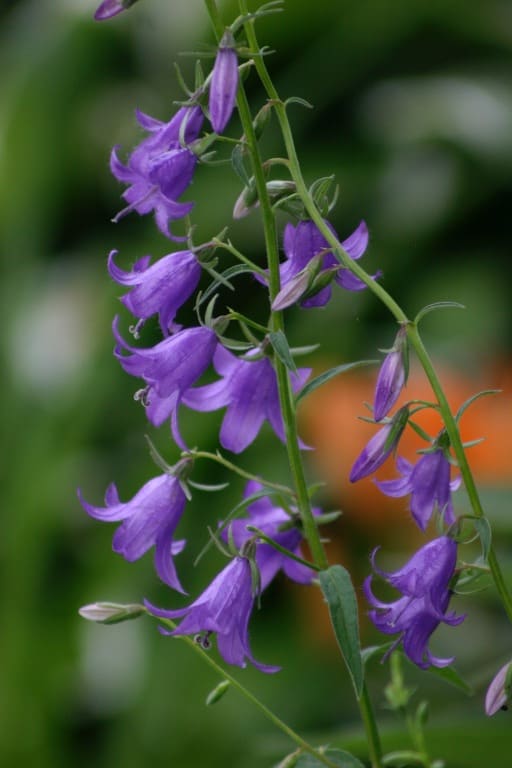
Growing Requirements For Campanula:
Campanulas are generally low maintenance plants.
1. Moisture Requirements
- Many Campanula plants like moist soil, and mulching is a great option to help maintain some moisture in the soil during dry periods.
- Others will thrive in poor dry soils, so it's important to know the moisture requirement of the specific cultivar that you are growing.
2. Light Requirements
- Campanula can be planted in full sun to a part shade location.
- In hot climates it's best to grow in a partial shade location.
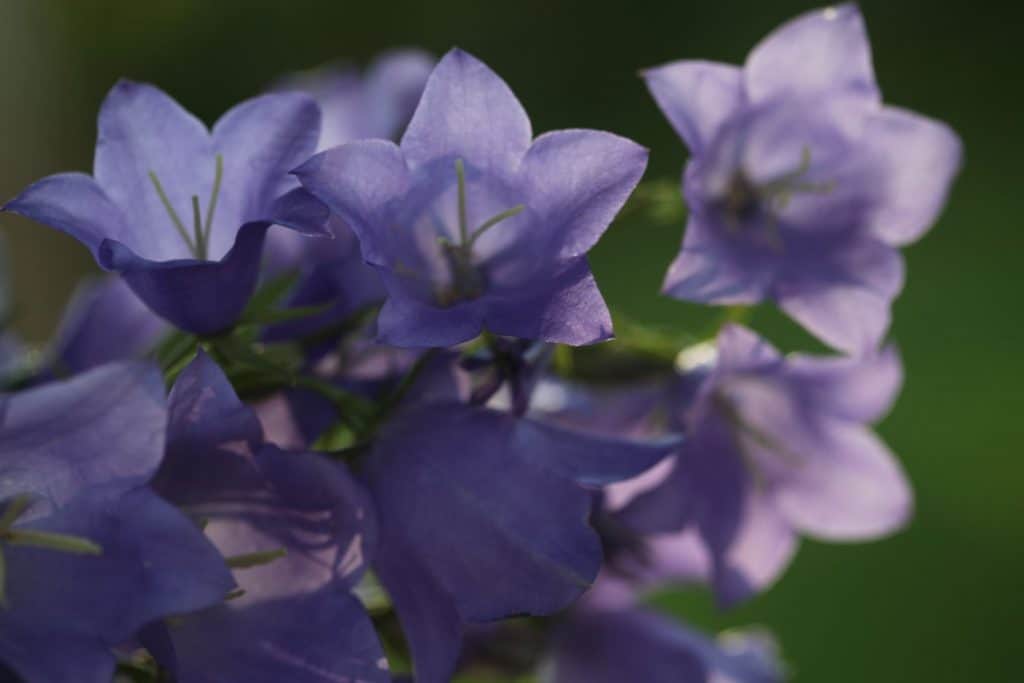
3. Soil Requirements
- Plant into well drained soil amended with organic matter.
- Many Campanula species like a nutrient rich soil.
- Some species however like Campanula rotundifolia, tolerate poorer soil conditions. Some will also grow in clay, as long as there is good drainage.
- Our self seeded specimens, c. rotundifolia, grew in a grassy location at the edge of a shaded garden, near a rocky pathway. The soil was clay and rocky, and yet they flourished.
- Every year they grow back, and get a little bigger and bloom more profusely.
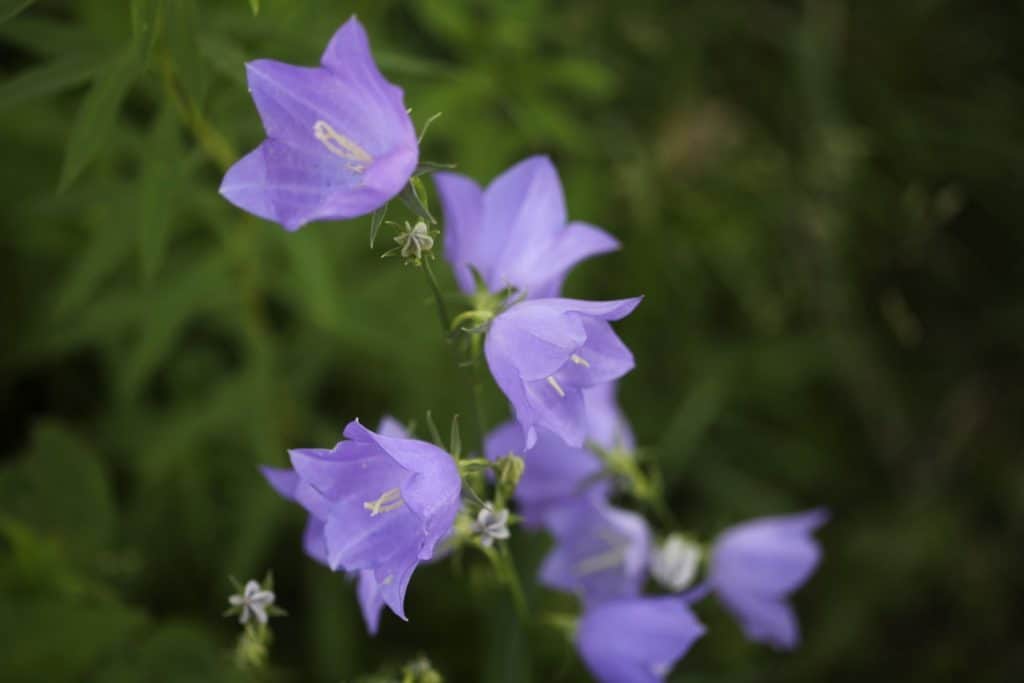
4. Growing Zones
- Growing zones for campanula are dependent on the species, and generally they are hardy to USDA zones 3 to 10.
- Some species prefer the tropics or mediterranean climate. Others do better in cooler temperate climates.
Campanula Flower Care
Deadheading
- Deadheading is optional for these plants, however it will help the plant look tidier after blooming if the spent blooms are removed.
- To deadhead, snip the flower stalks back at the base of the plants. Alternatively you can remove each individual spent flower.
- Deadheading is easy to do, and will prevent seed formation and reseeding.
- It can also promote further flowering.
- I often allow the seed pods to develop, and collect the seeds at the end of the season, or just allow them to reseed naturally.
Mulching
- Mulching around your Bellflowers will help to keep the moisture in the soil.
- This mulch will also break down over time and contribute to a nice organic soil.
How To Grow Campanula From Seed
There are a number of ways to grow campanula from seed.
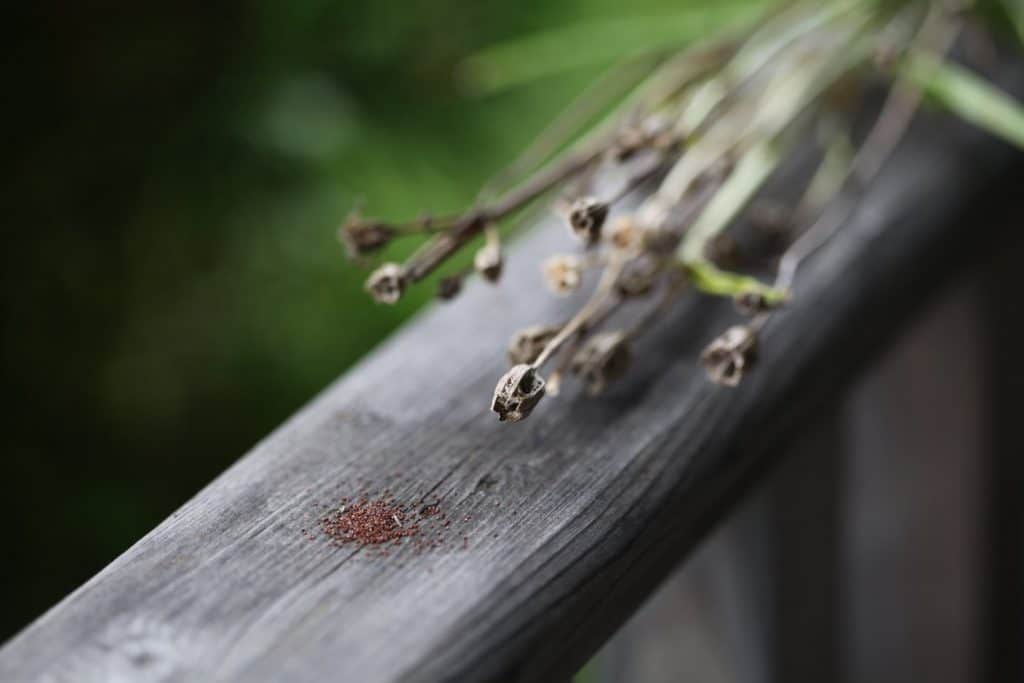
This can be done by:
- Starting the seeds indoors 8 to 10 weeks before the last spring frost
- Planting directly in the garden, or
- Winter sowing in milk jugs
What Do Campanula Seeds Look Like?
Campanula seeds form inside the seed pods which develop if the flowers have been fertilized.
The seeds are very tiny, oval shaped, and are shades of dark amber brown.
Each individual seed is less than 1 mm in length.
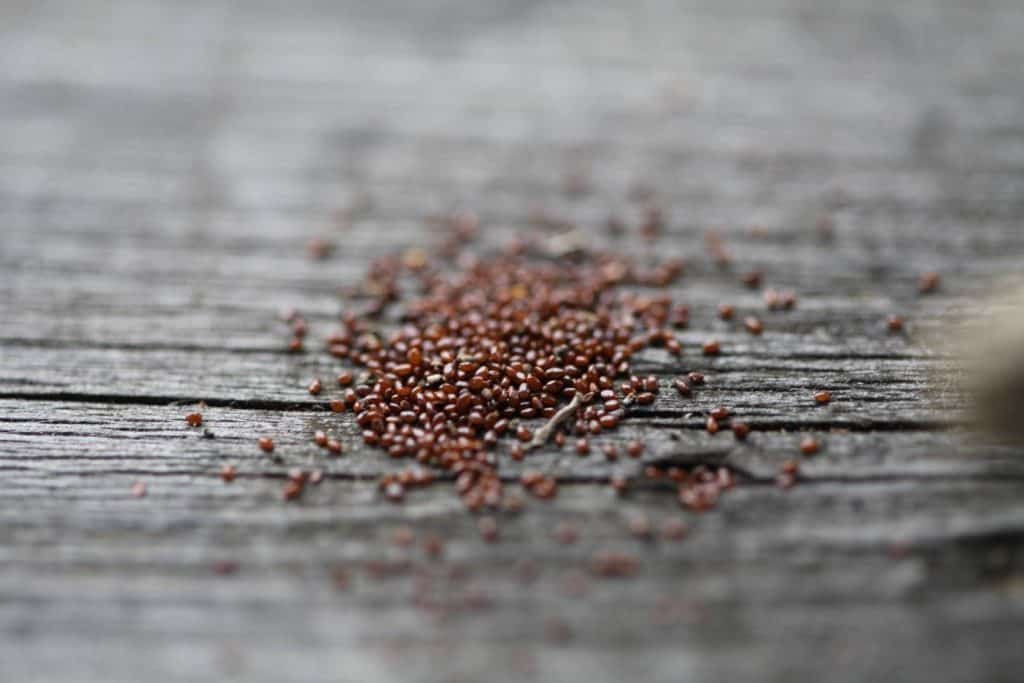
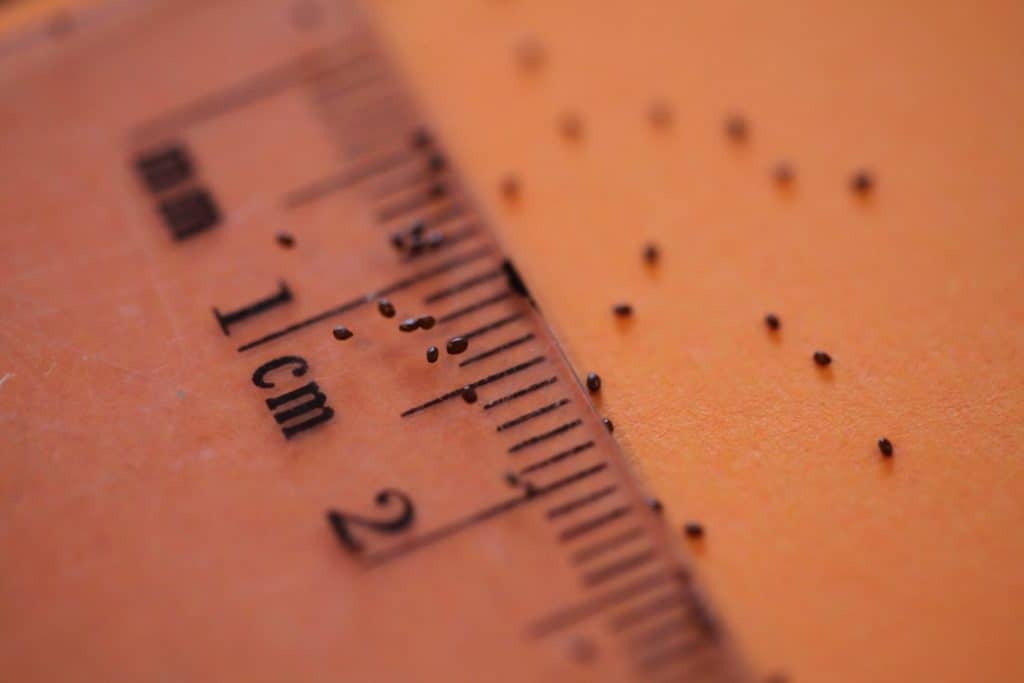
At maturity the seeds will easily spill from the seed pods, dispersing into the garden in early fall.
If you plan to gather the seeds for planting, allow them to mature on the plant, and in late summer or early autumn collect them before they are dispersed.
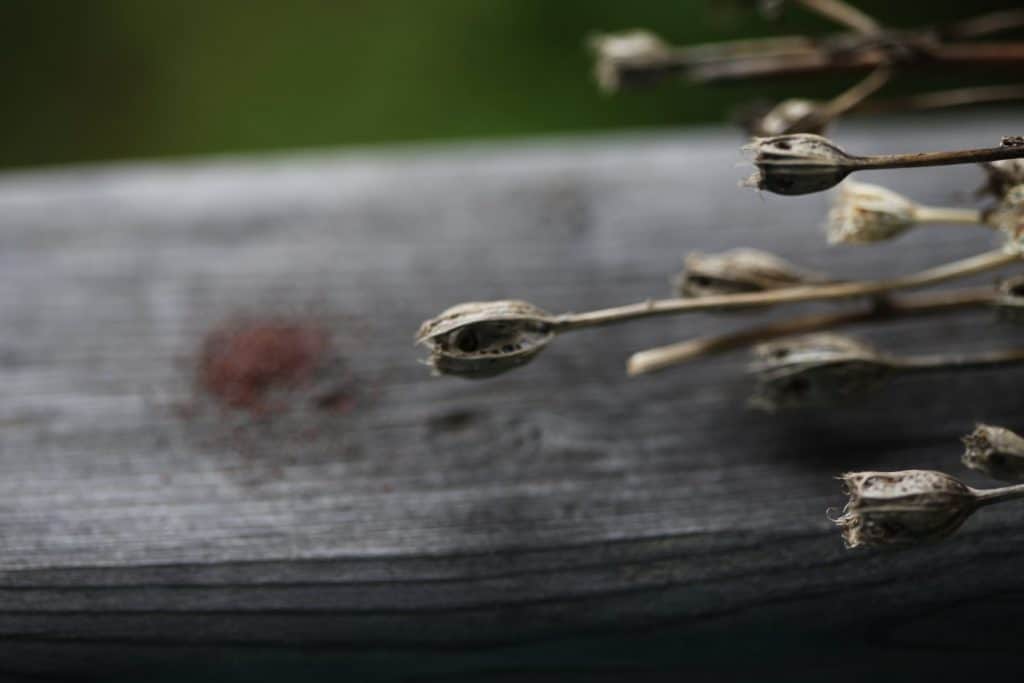
Do Campanula Seeds Require Stratification?
Perennial Campanula seeds benefit from a period of cold moist stratification. The stratification process will help the seeds to germinate more easily.
To stratify these tiny seeds:
- Place them into a baggie with a moistened soilless medium, such as vermiculite, moist paper towel, or peat moss.
- Place the baggie in the fridge. Alternate between the fridge and freezer, day about, for a period of a week.
Planting Campanula Seeds Indoors
- Following the stratification period, sow seeds into a cell tray, on top of a soilless mix, as they require light to germinate.
- I sometimes sprinkle fine vermiculite over the seeds in the cell trays. Even if they require light for germination, the light will be able to penetrate this covering.
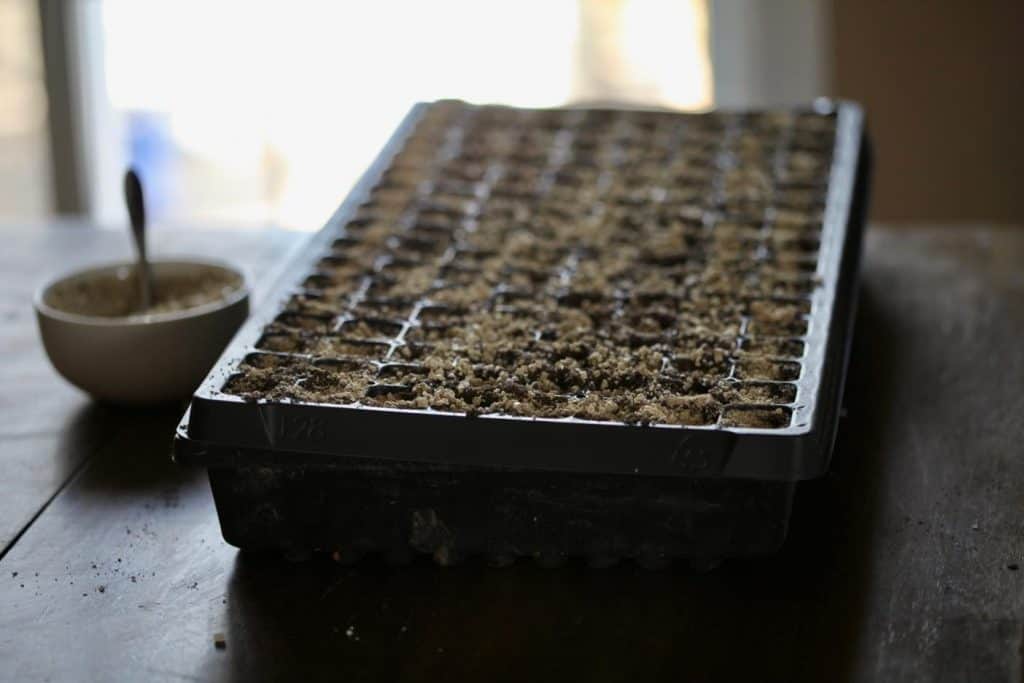
- Keep the planting mix moist while the seeds are germinating, and do not allow the mix to dry out.
- Bottom water the cell trays as needed so that the seeds are not disturbed.
- Place on heat mats until sixty percent of the seeds have germinated, then place under grow lights to grow on.
- Keep the seedlings under the grow lights, continuing to water as needed, until they are ready to be transplanted out in spring.
When To Transplant Campanula Seedlings Outside
Campanula is sensitive to transplanting, so use caution if starting seeds indoors and then transplanting out into the garden.
Take care that the roots are not injured during the transplanting process.
Transplant out into the garden in early spring when the risk of all frost has passed, and after the seedlings have been hardened off.
Planting Campanula Seeds Outdoors
- Campanula seeds can also be planted directly into a prepared garden bed.
- To do this, sprinkle the seeds directly onto the garden bed surface in late fall.
- Allow natural stratification during the winter months, and the following spring the new seedlings will begin to emerge.
- Planting the seeds using this method avoids any root disruption, as the seedlings will not need to be disturbed after they have rooted.
Winter Sowing Campanula In Milk Jugs
Winter sowing campanula is another great way to provide natural stratification in the outside elements.
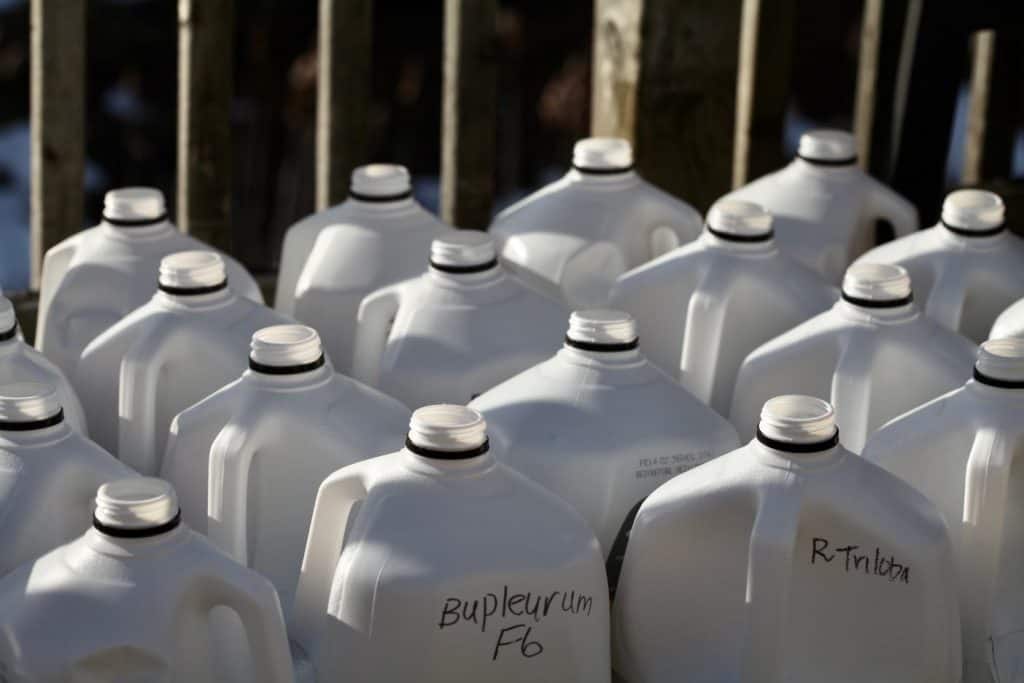
I love this process as it provides some protection to the tiny seeds, yet also exposes them to the thaws and freezes of winter.
It also clears up space on the seedling shelves inside, allowing the seeds to remain outside in their little protective jug for the winter .
Then at just the right time in your own growing zone, the seedlings will begin to emerge in early spring.
They will also naturally become hardened off, as they are exposed to the outdoor elements.
Transplant the young plants into the garden after the last spring frost.
How Fast Does Campanula Grow?
Perennial Campanula can take several years before they reach blooming size, as with most herbaceous perennials.
Biennial campanula will flower the following year from planting.

Does Campanula Self Seed?
Campanula easily self seeds if grown in ideal conditions and in an area where it is happy.
In fact our volunteer patch of Campanula rotundifolia keeps spreading every year, left to self seed and grow a little colony of bellflowers.
Will Campanula Spread?
Perennial Campanula can spread in the area in which it grows.
Each individual plant can grow via rhizomatous growth as well as self seeding, forming small colonies of plants growing together.
Digging and dividing larger clumps can be done to spread the plants throughout the garden space.
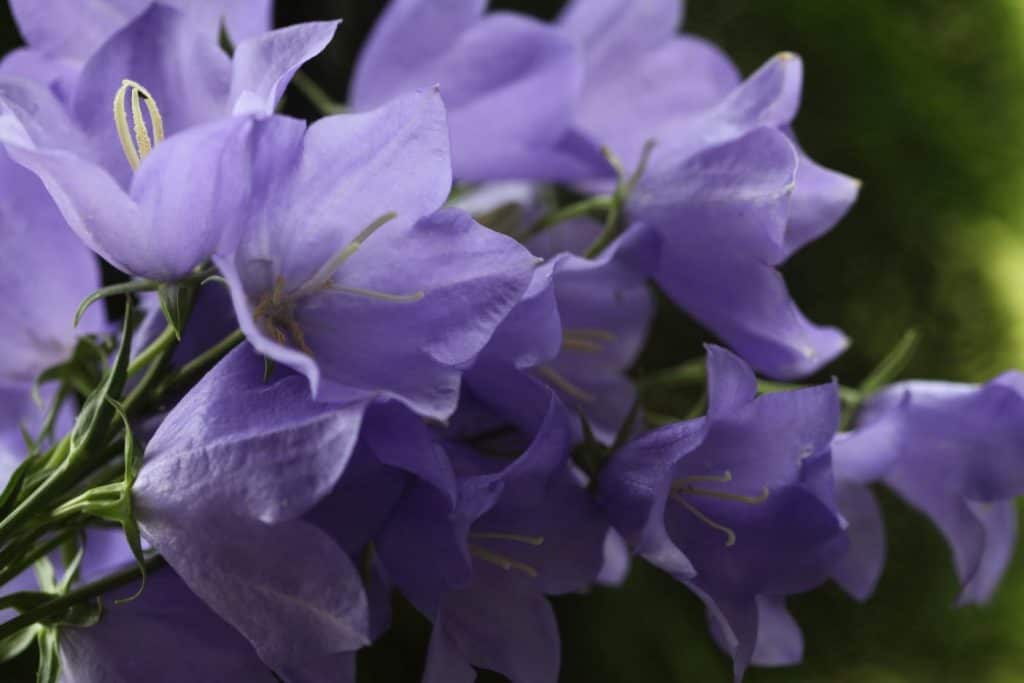
Is Campanula Invasive?
Campanula rapunculoides (Creeping Bellflower) has been identified as an invasive species of Campanula, and should not be planted in the garden.
It spreads readily via aggressive rhizomatous roots and self seeding, and can be difficult to eradicate.
It can also grow from pieces or fragments of storage roots or stolons under the soil, that have been broken off from the plant during removal.
Here is a write up from the Invasive Species Council of Manitoba on Creeping Bellflower.
Is Campanula Deer Resistant?
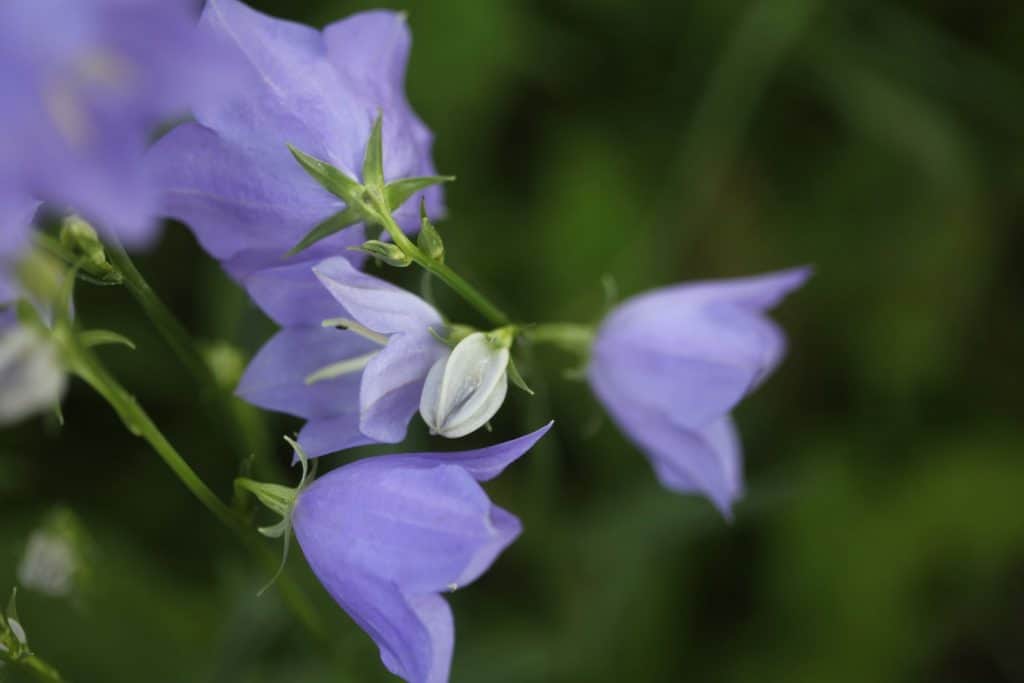
Campanula is known to be deer resistant, although the deer will still eat them if they are hungry enough.
How Long Does Campanula Bloom?
Perennial Campanula has it's bloom time, and like other perennials will generally bloom for shorter periods rather than all summer long. It will then return to the garden year after year, blooming at around the same time every year.
Our campanula blooms for about two to three weeks in a large flush in early summer. It can have occasional blooms throughout the summer following the main flowering period.
Campanula As A Cut Flower
Campanulas make great cut flowers, with their romantic bell shaped or star shaped blooms.
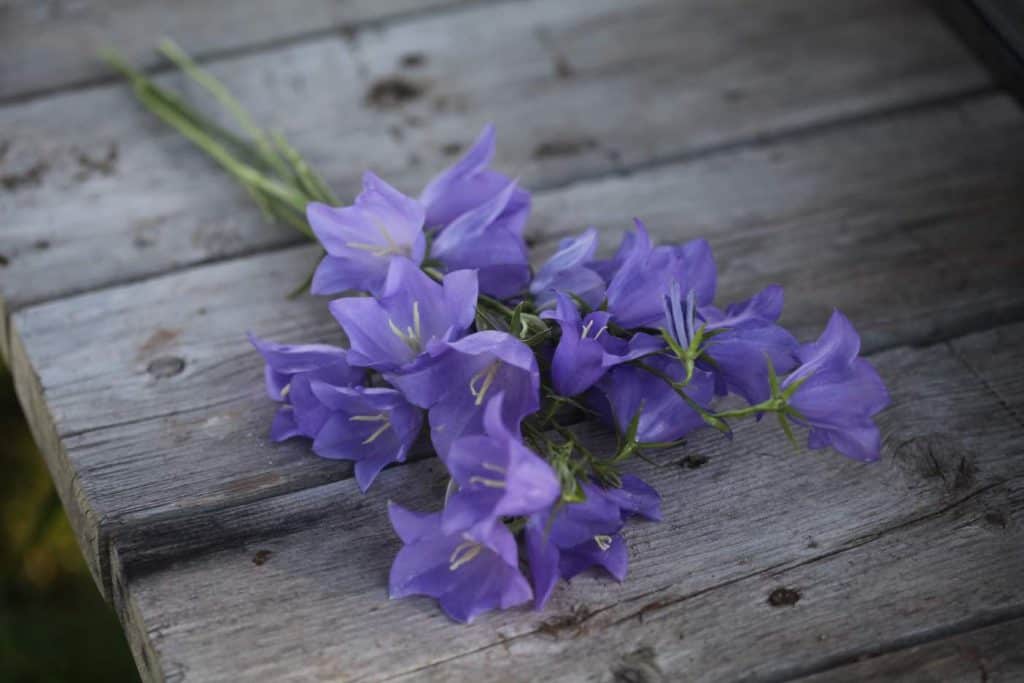
They are long lasting in the vase.
For best results condition the flowers after cutting for longest vase life.
Place them in bouquets with other cottage type flowers for a simple wildflower look, or group them together in a bouquet all on their own.
Conclusion
Campanula or bellflower plants are perfect plantings for cottage gardens.
These are hardy plants with beautiful bell shaped flowers, and with many popular varieties and species to choose from to suit your growing needs.
Campanula flowers are easy to grow, and a good choice even for the beginner gardener.
Have you tried to grow campanula in your garden? Please share your experience in the comments below!
Other Posts You May Like:
See the Web Story on Growing Campanula, Bellflower, In the Garden!
PIN IT FOR LATER!
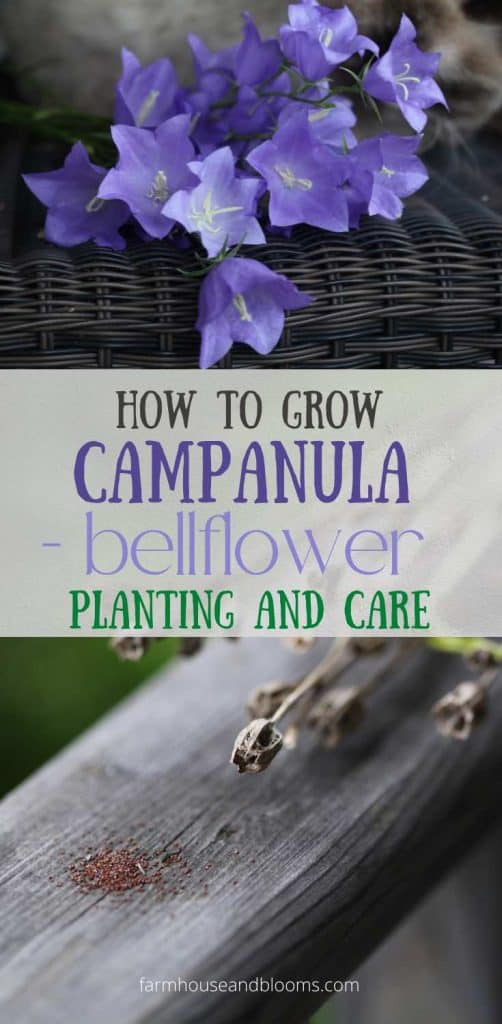
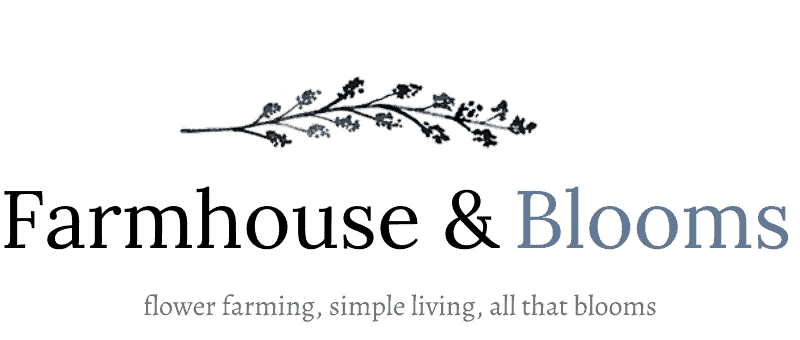

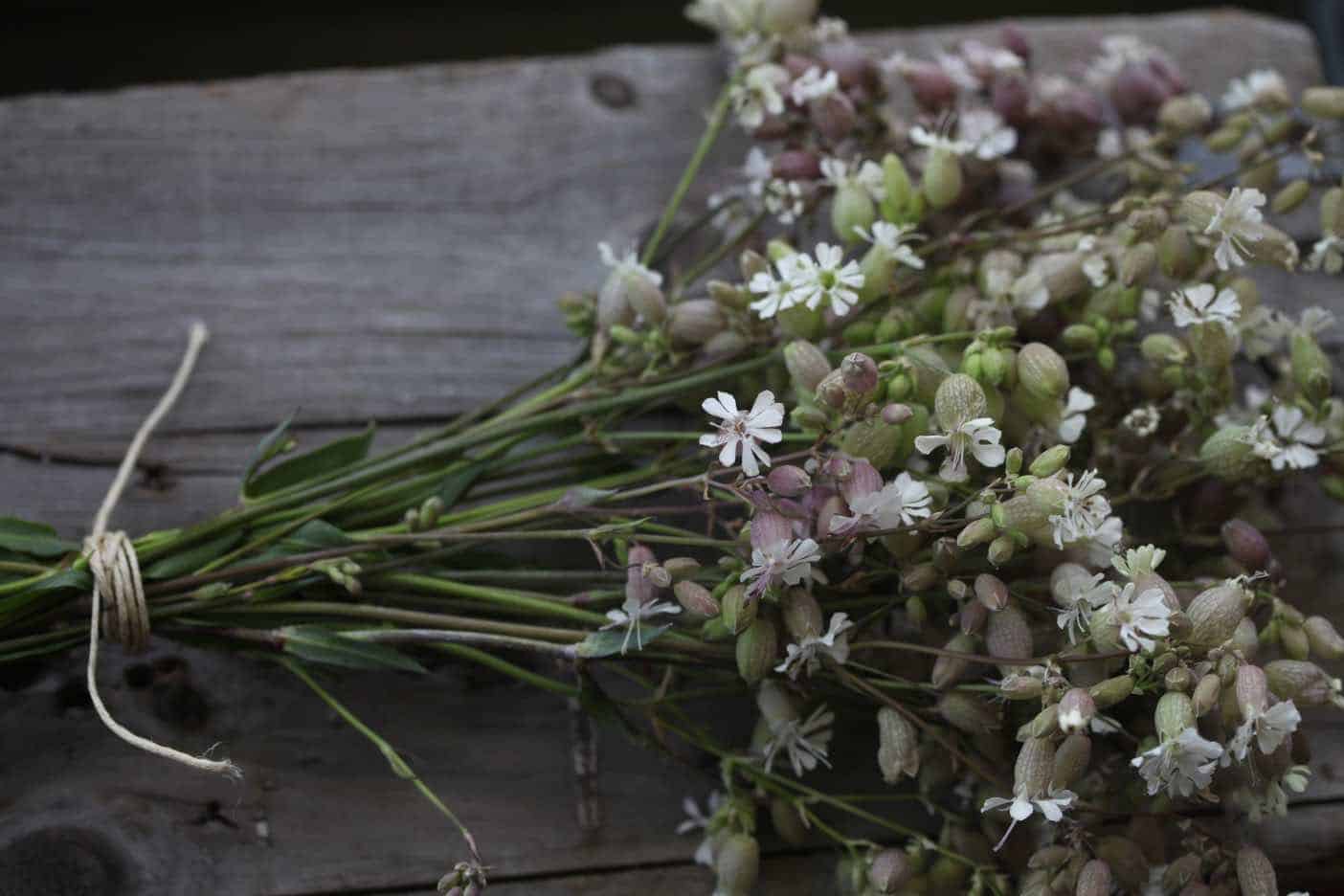
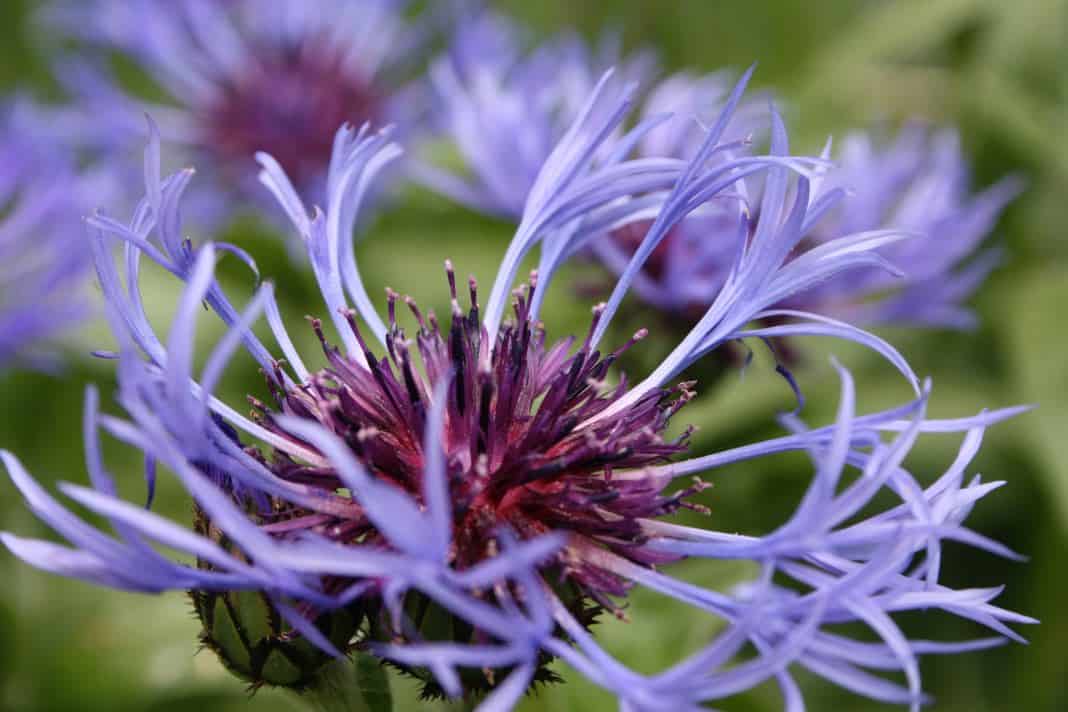
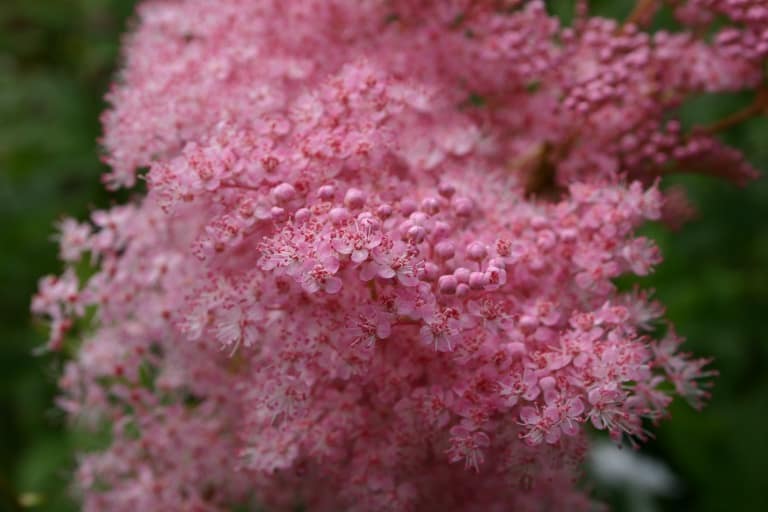
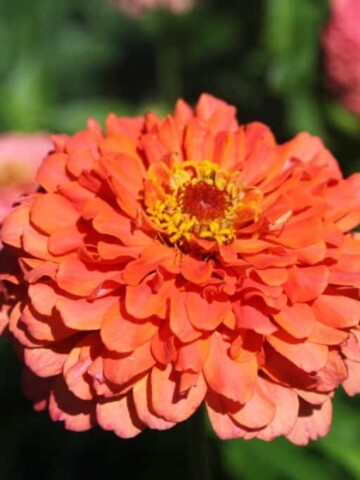
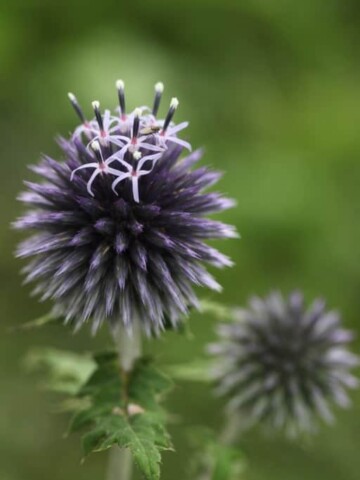
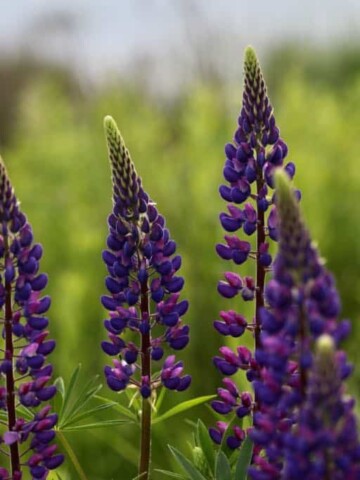
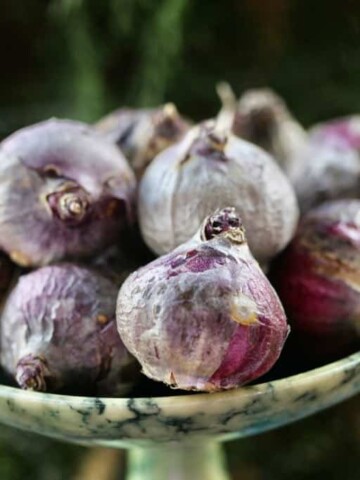
Leave a Reply